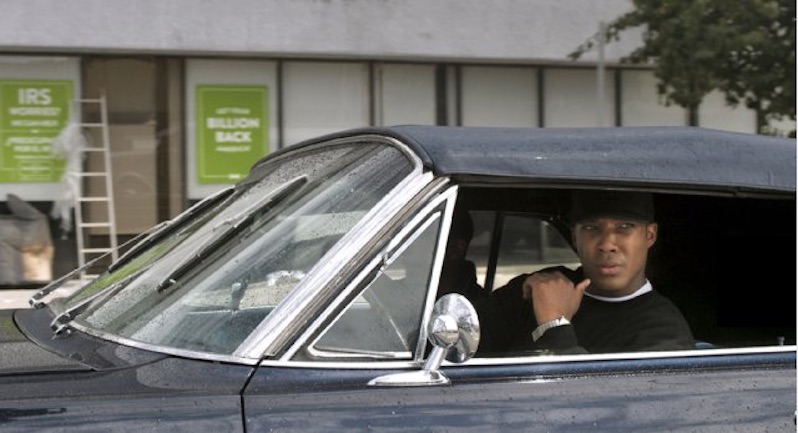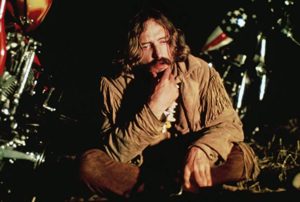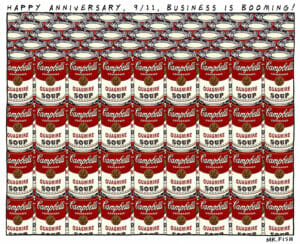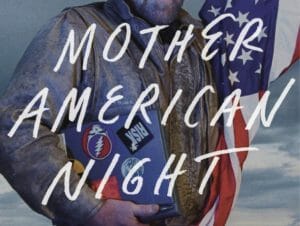2015 in Review: A Very Good Year at the Movies
What do “Straight Outta Compton,” “Carol” and “Mad Max: Fury Road” have in common? They all made Truthdig film reviewer John Patterson’s 2015 list of favorites. Corey Hawkins in "Straight Outta Compton." (IMDB)
Corey Hawkins in "Straight Outta Compton." (IMDB)
Corey Hawkins in “Straight Outta Compton.” (IMDB)
I didn’t see as many movies as I would have liked to this year, but there were plenty to admire. These were the films that left the greatest impression on me. I draw the line at the term “best of” because it makes one’s personal preferences seem misleadingly definitive. These were, to use a more honestly subjective term, my favorite movies of the year.
“’71” (U.K.; director: Yann Demange)
A young, naive British soldier (Jack O’Connell), on his first tour of duty in the third year of the decadeslong “Troubles” in Northern Ireland, is cut off from his unit and finds himself beset by enemies from all sides of the conflict, including his own, over one terrifying night spent on the streets of Belfast. Republican and Loyalist terrorists stalk him, and, halfway through the movie, he knows too much and has seen too much for even the treacherous undercover operatives of the British army to let him live until daybreak. Partly an expert delineation of the many factions battling one another on the streets of Ulster in those times, and partly an unabashed breakneck thriller—think “Odd Man Out” with ultraviolence and every kind of betrayal—it suggests that debutant director Yann Demange has a very interesting career ahead of him, and that O’Connell is a star in the making.
“Straight Outta Compton” (U.S.; director: F. Gary Gray)
An ambitious and spellbindingly kinetic account of the rise of N.W.A and the gangsta-rap genre the group pioneered, “Straight Outta Compton” models itself explicitly on Martin Scorsese’s “Goodfellas” (a movie exactly contemporaneous with the emergence of N.W.A). The film takes its own sweet time to tell an epic story of embattled artists crawling out from Compton’s pre-Rodney King underbelly and rising to the top of the charts, despite a host of obstacles from outside—including the Los Angeles Police Department, a clueless recording industry and innumerable crooked suits—and from within their own ranks. Sanctioned and produced by ex-members of N.W.A (to the extent that Ice Cube is played, and very well, by his own son, O’Shea Jackson Jr.), it’s a rare instance of a collective, authorized movie autobiography that also works as history and entertainment (despite certain predictable lacunas, including Dr. Dre’s youthful propensity for violence toward women). Also proof that F. Gary Gray, who also made the Ice Cube-scripted comedy “Friday,” is no longer simply gangsta rap’s pet director. It’ll make you strut!
“Carol” (U.S.-U.K.; director: Todd Haynes)
Fifteen years in gestation as a script and passed around in that time by a half-dozen top American directors, it seems perfectly serendipitous that Patricia Highsmith’s pseudonymous lesbian novel of 1952, for decades the subterranean classic of its in-the-shadows genre (although Highsmith would not acknowledge it as her own creation until 1989), should have landed in the hands of Todd Haynes, director of “Safe,” the neo-Sirkian “Far From Heaven” and HBO’s marvelous reimagining of “Mildred Pierce.” Offering a firmly realist contrast to the sumptuously appointed, expressionist, neo-“women’s picture” that was “Far From Heaven,” it evokes the somberly magical, vanished Gotham of the postwar years as backdrop to the slow-burning infatuation, then bright-burning love, that develops between a sophisticated, 30-something New Jersey suburban wife and mother (Cate Blanchett) and the shopgirl/trainee photographer (Rooney Mara) who falls for her in a single instant of eye contact over a store counter one Christmas. Screenplay and lead performances are pitch-perfect (Mara eerily resembles the youthful Highsmith), and all are rendered to perfection in the blues, browns and golds of Edward Lachman’s career-best cinematography.
“Mad Max: Fury Road” (U.S.-Australia; director: George Miller)
Pure cinema, headlong, pulse-pounding, nonstop action and speed, “Mad Max: Fury Road” told us to shut up and stop feeling guilty about enjoying primal action-movie testosterone and velocity. With almost no dialogue, and with the eponymous avenger (Tom Hardy) relegated to second rank, below newly minted feminist icon and monosyllabic lady badass Imperator Furiosa (a majestically surly Charlize Theron), the movie relies purely on adrenaline backed up by strikingly beautiful and startling imagery throughout. Check it also for references to both the Australian New Wave of the 1970s—Peter Weir’s “The Cars That Ate Paris” even gets a revival here—and the stunt-heavy, early-’70s “Ozploitation” action movies of which the original “Mad Max” (1979) was perhaps the last pure example. With it, 70-year-old George Miller, returning to his own franchise for the first time in 30 years, proved that age is no impediment to speed or power.
“Hard to Be a God” (Russia; director: Aleksey German)
Finally released (well, on a single American screen) almost half a century after it was conceived in Soviet Russia in 1964, and only after its director, its star, its editor and its cameraman had all died, “Hard to Be a God,” even in the history of its creation, seems a testament to the cliché that all things Soviet and/or Russian should be brutish, painful, tragic, ruinously cold—and terminally incomprehensible. And just look at the screen itself: A parallel version of earth, but one that has never reached a “Reformation”-style reckoning with its own savagery and cruelty, is seen through the eyes of earth-born scientists sent to observe it as it fails, over and over again, to reach past its own inheritance of tribalism, stupidity and selfishness. Trouble is, the scientists have been here so long that some of them have gone native and appointed themselves leaders and gods to a society they aren’t supposed to interfere with. German is a figure in Russian cinema whose career echoed, and for a while ran in parallel with, that of fellow Soviet visionary Andrei Tarkovsky, and fans of the latter’s work will find much to admire here (“Hard to Be a God” and “Stalker” are both derived from novels by Boris and Arkady Strugatsky). This is a truly monolithic work, slow to yield up its truths but filled wall-to-wall with extraordinary imagery imparted to us through never-ending tracking shots through the astonishingly filthy and violent twin world that German’s set designers have constructed. It is a world of ice and snow and misery; piss, shit and vomit; random murder and strange rituals; but also of ecstatically beautiful black-and-white filmmaking, sometimes bizarre, often apparently insane. On first viewing, one’s main reaction is WTF is this, and how is it so mesmerizing while being initially so hard to understand? Further viewings reveal ever deeper layers of madness and transcendence—it feels like a bottomless, infinitely unfathomable masterpiece of world cinema.
Honorable mentions: “Bridge of Spies,” “The Revenant,” “The Hateful Eight,” “Creed,” “The Martian,” “Spy,” “Tangerine,” “Spectre,” “The Diary of a Teenage Girl,” “Inside Out,” “45 Years,” “Room,” “The Assassin,” “99 Homes,” “Sicario,” “Spotlight,” “Out 1 (Noli Me Tangere)” (reissue).
2015 Farewells:
Setsuko Hara, Chantal Akerman, Maureen O’Hara, Holly Woodlawn, Christopher Lee, Louis Jourdan, Rod Taylor, Robert Loggia, Gunnar “Leatherface” Hansen, Alex “Moe Greene” Rocco, Haskell Wexler and Wes Craven: Requiescat in pace.
Your support matters…Independent journalism is under threat and overshadowed by heavily funded mainstream media.
You can help level the playing field. Become a member.
Your tax-deductible contribution keeps us digging beneath the headlines to give you thought-provoking, investigative reporting and analysis that unearths what's really happening- without compromise.
Give today to support our courageous, independent journalists.









You need to be a supporter to comment.
There are currently no responses to this article.
Be the first to respond.